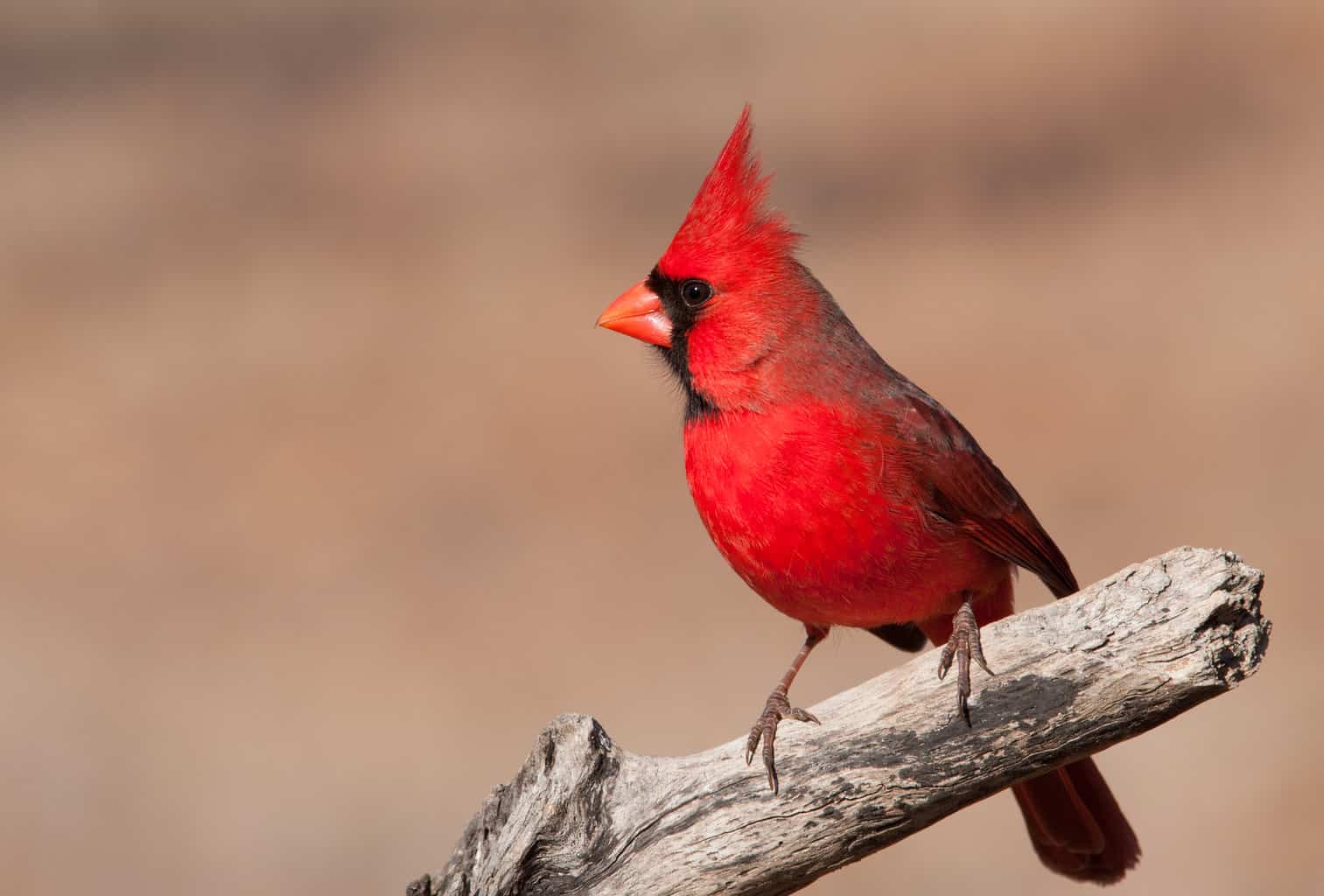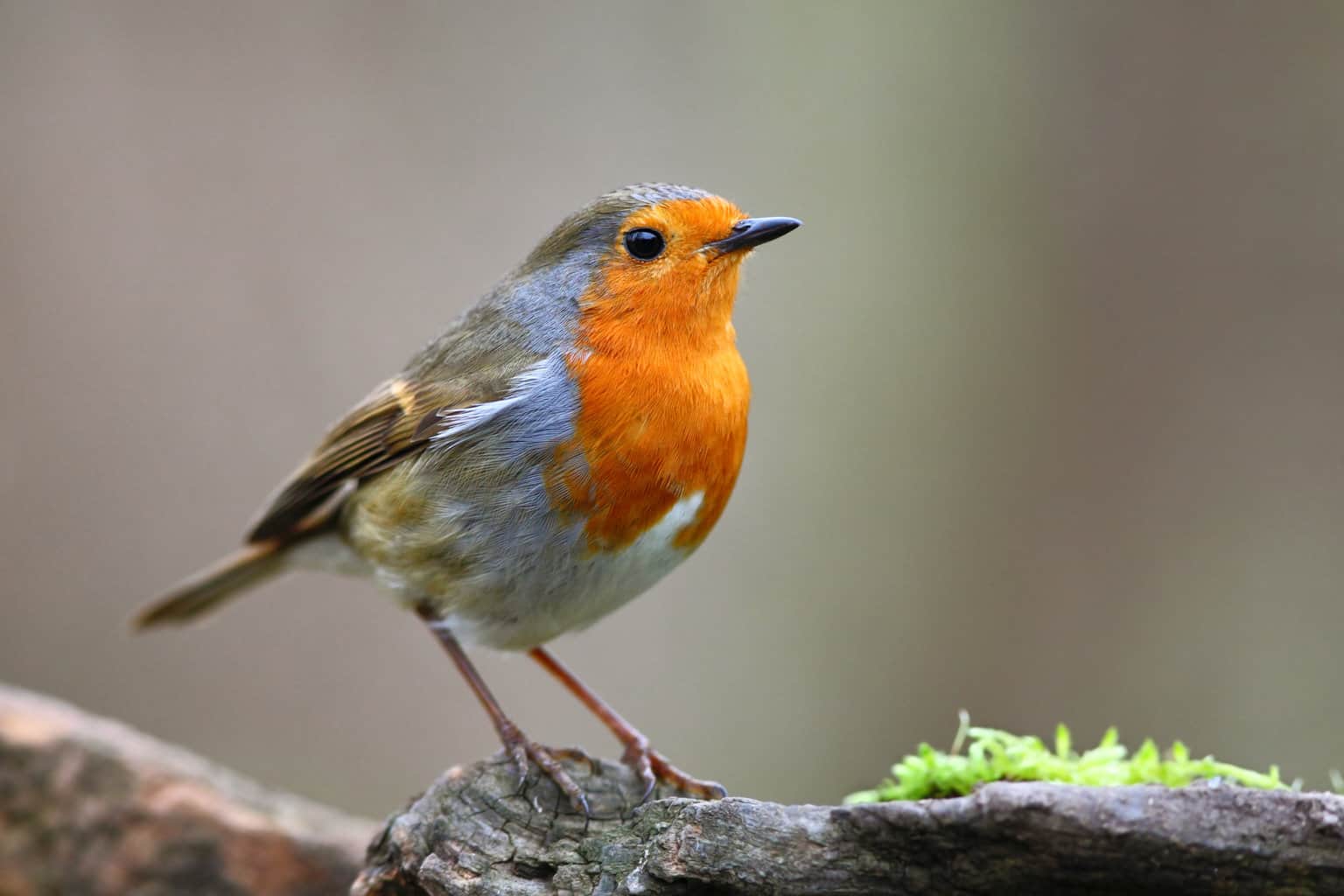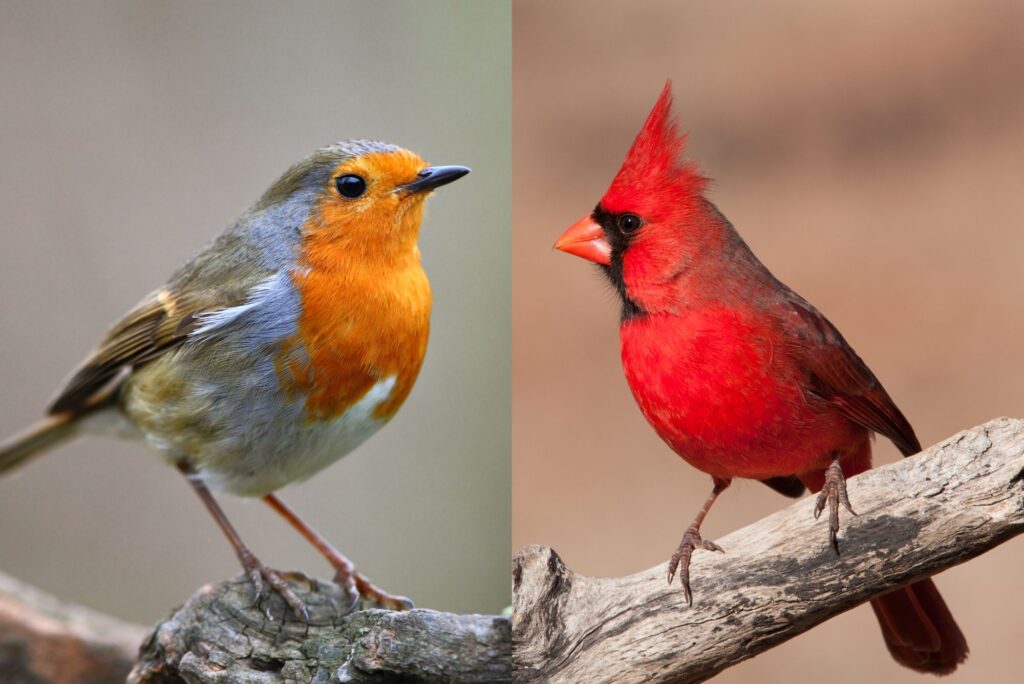Birds are often known by more than one name. For example, the Canada jay, a delightful little songbird, also gets called a Camp robber, Whiskeyjack, and Gray jay!
Red-colored birds face similar naming problems. People from different areas or traditions might look at a cardinal and call it a red robin, a redbird, or a red jay.
Let’s set the record straight. Are all cardinals redbirds? Are all red-colored birds redbirds? Is there even such a thing as a red jay? In this post, I’ll go through everything you need to know about red-colored birds, including cardinals and red robins.
In short, “redbird” can describe any red-colored bird. That means cardinals are redbirds, but not all redbirds are cardinals.
Red-Colored Birds in North America
There are many different birds with red coloration! Some birds, like cardinals, have sex-linked characteristics, and only the males are actually red.
Redbirds can come in all shades and hues of red. Some are bright red, and others are pale. Some others are pale pink.
Here are a few red-colored birds and their noteworthy characteristics!
Scarlet Tanager
The scarlet tanager is an absolutely stunning bird that spends its winters in the northwestern corner of South America. It can be spotted in the Southeastern United States during its migration season and spends the breeding season in the Northeast and Midwest.
You will not see the scarlet tanager very far west of the Mississippi River.
I love this bird because it is just so brightly colored. They are challenging to spot because they rarely leave the highest reaches of the forest canopy. Only the males are bright reddish-orange, whereas female birds are yellowish green.
Interestingly, the males change color during the fall, losing their red feathers and replacing them with yellow-green plumage.
Their diet includes blackberries, huckleberries, raspberries, serviceberries, juneberries, mulberries, chokeberries, and strawberries. If you live in the Midwest or Northeast and have a lot of berry bushes, you may be lucky enough to spot a scarlet tanager!
Summer Tanager
Like the scarlet tanager, the summer tanager lives high in the treetops.
Males are a stunning bright red. Females are yellowish-green, as are juvenile males. They spend the non-breeding season in southern Mexico and the northern part of South America. They migrate through Mexico and spend the mating season in the South and the Southwest United States.
Here’s something I love about the summer tanager: their diet is rich in wasps and bees!
They catch these large, stinging insects mid-flight and beat them against a tree branch to kill them. They remove the stinger by rubbing the dead wasp or bee against the tree, then consume it. They will also eat bee and wasp larvae!
What a useful and beautiful bird!
Vermilion Flycatcher
You won’t see a vermilion flycatcher in many places in the US. However, if you live along the coast of the Gulf of Mexico or the Mexican border, you might be lucky enough to spot this gorgeous species during the breeding season.
Vermilion flycatchers do what their name suggests; they help control the fly population by consuming large amounts of flies yearly.
Males have red feathered bodies and a red crest, but their back is brownish-black. They also have a dark band across their eyes. Females are light brown, with a light cream breast and a yellow belly.
They get their name from their habit of finding a great perch and waiting for insects to eat!
Red Crossbill
Red crossbills are less vibrant than other red-colored birds. Males have brick red feathers, and females are brown or olive green on their backs and yellowish on their bellies.
Crossbills have a crisscrossed beak, giving them a unique look compared to other songbirds. Their crossed beaks allow them to break into tightly sealed cones.
They are sometimes spotted in the Midwest and Plains states, but they never go as far south as Louisiana. More frequently, they visit North and South Dakota during the non-breeding season. Year-round, they can be found across most of Canada and along a strip of territory from Canada to Central America, including Montana, Idaho, Wyoming, Utah, Colorado, New Mexico, and Arizona.
Here is a fascinating fact about the crossbill: it can breed any time of year! As long as it has a healthy supply of conifer seeds, it can hatch and raise fledglings in almost any winter-weather conditions.
The white-winged crossbill has the same red body and crossed beak but has black wings with two white bars.
Pine Grosbeak
The pine grosbeak is found in parts of the Northern Hemisphere, including Russia, Scandinavia, Canada, and the northern US states.
They are a large finch variety. When you see them at a feeder with other finches, you’ll notice that they are much bigger than all the other finches and songbirds.
Males and females have gray bodies, but the tips of their feathers are more colorful. Males are reddish-pink, and females are yellow. They use their oversized beaks to crush heavy seeds, which comprise most of their diet.
How Are Cardinals Different from Other Red Birds?
There are quite a few red birds out there to spot! Are cardinals just another red-colored bird?
People tend to love spotting cardinals more than some of those other species. Think of how often cardinals are used in artwork, home decor, and even clothes and jewelry. All of the birds I listed are wonderful, but cardinals seem to win more people’s affection!
There are three kinds of “true cardinals”: the Vermillion Cardinal, Desert Cardinal, and Northern Cardinal. The Red-Crested Cardinal is not actually a member of the Cardinalis bird family, but it often gets lumped in with the others.
The only true cardinal that lives in North America is the Northern Cardinal.

Northern Cardinal Facts
Northern Cardinals have two easily identifiable features: their bright red feathers over their entire bodies and their unique silhouette.
Males are red-bodied, also with a red bill. Females are pale brown, but there is a tinge of red to their wing feathers, tail, and crest. Both males and females have black faces and reddish-orange bills.
Males and females both have a prominent, noticeable crest. Often, they lean forward while perched, and their tail points straight downward.
The Song of a Northern Cardinal
You can hear the beautiful song of a Northern Cardinal in this YouTube video.
Familiarizing yourself with the song and calls of a cardinal can be a great idea, mainly because you will often hear a cardinal before you see one. Learning to recognize the call will definitely help you spot more cardinals.
Not long ago, my mom and I were walking to the farmer’s market and heard that distinct cardinal’s song! We stopped and looked around until we finally found the gorgeous male cardinal high in a tree. We would have missed him if we didn’t know to look for him based on his song!
Both male and female cardinals are singers, and their song is loud. It consists of a string of two-parted whistles, but it often speeds up at the end and has a slow trill. Some people hear cardinals sing “birdie, birdie, birdie” for two to three seconds. Others here “cheer, cheer, cheer.”
Their warning call is also distinct. It is a loud chipping sound that they make to warn anyone who is coming into their territory.
Is a Northern Cardinal Also Called a Red Robin?
Sometimes, people refer to a Northern Cardinal as a “red robin,” but this is a colloquial name. There is a species called the red robin, which is unrelated to the American robin.
The American robin is named after the European robin, which is often called a “red robin.” Both have reddish-orange underparts. European robins and American robins are in different families. European robins are Old World flycatchers, and American robins are thrushes.
Northern Cardinals are a totally different species and belong to the Cardinalis family.
Here’s a fun tidbit about European red robins vs. American robins: In the film Mary Poppins, Mary is visited by a robin who sits on her finger as she sings about “a robin feathering its nest.” American viewers didn’t think anything was odd when the movie came out, but British viewers thought, “Why didn’t they use a robin?”
It turns out that this was a slight translation issue! American robins don’t nest in England, and the use of an American robin was an anachronism! In the lyrics, the “robin feathering its nest” would have been a cute little European robin.

American Robins vs. Northern Cardinals
The American robin is one of the most common birds in North America. An estimated 300 million of these famous birds are alive today, most of which are spread throughout the 48 contiguous United States.
Cardinals are not rare, but there are definitely more robins in the world than cardinals.
Three states (Connecticut, Michigan, and Wisconsin) have made the American robin their state bird, even as seven other states have chosen the cardinal (Illinois, Indiana, Kentucky, North Carolina, Ohio, Virginia, and West Virginia).
There are several key differences between robins and cardinals:
- Robins are slightly larger than cardinals.
- robins have fan-shaped tails; cardinals sport rounded tails.
- Robins travel in large flocks, but cardinals are relatively solitary. They will live in a small family group during the breeding season.
- Cardinals have a much more melodious song, and robins chirp loudly.
- Both are comfortable living near humans, and you will often see them in rural backyards and suburban neighborhoods. Neither bird migrates.
Is There Such a Thing as a Red Jay? Are Cardinals Ever Called Red Jays?
The use of “red jay” to refer to a Northern Cardinal is another example of a colloquial name, not an accurate one.
Jays are brightly colored birds, and some have a crest on the top of their head like a cardinal. However, there are no jays that are predominantly red in color.
What Seeing a Cardinal Means
You are not alone if you’ve ever assigned a special meaning to see a cardinal!
In many traditions, seeing or hearing a cardinal carries spiritual significance. These are some of the spiritual meanings that people attach to cardinals:
- A sign of new or old romance and love
- Hope and joy in the winter holiday season
- A loved one who is far away is safe
Perhaps the most common spiritual connection with cardinals is the idea of reassurance that a deceased loved one is nearby in spirit.
People often report seeing cardinals shortly after a loved one’s passing or when they are thinking about their loved ones who have died. The idea that cardinals symbolize a beloved friend or family member is comforting to so many people.
Attracting Cardinals, Robins, and Redbirds to Your Yard
If you want to experience more wild birds in your life, there are ways to make that happen!
Seeing a beautiful red cardinal in your yard can be a joy or comfort. It doesn’t matter if it is hidden among the green trees and singing high from the treetops or if it’s bright red against a snowy winter backdrop!
Robins may not be as flashy as cardinals, but they are still easily recognizable. I especially love helping kids learn to spot robins and watch as they build their nests, hatch their eggs, and raise their babies.
Don’t depend on just one feeder with one type of food to attract various bird species.
Instead, use a variety of feeder styles for cardinals and birdseed options. Add a birdbath and keep it clean and well-supplied with fresh water. Learn about the birds in your area and how you can attract them to your yard.
Cardinals prefer sunflower and safflower seeds, so use those to fill your bird feeders. If you want a genuinely hospitable garden for cardinals, get a feeder with a cardinal ring around the food access area. Cardinals prefer to face their food, and the ring will allow them to perch and eat comfortably.

